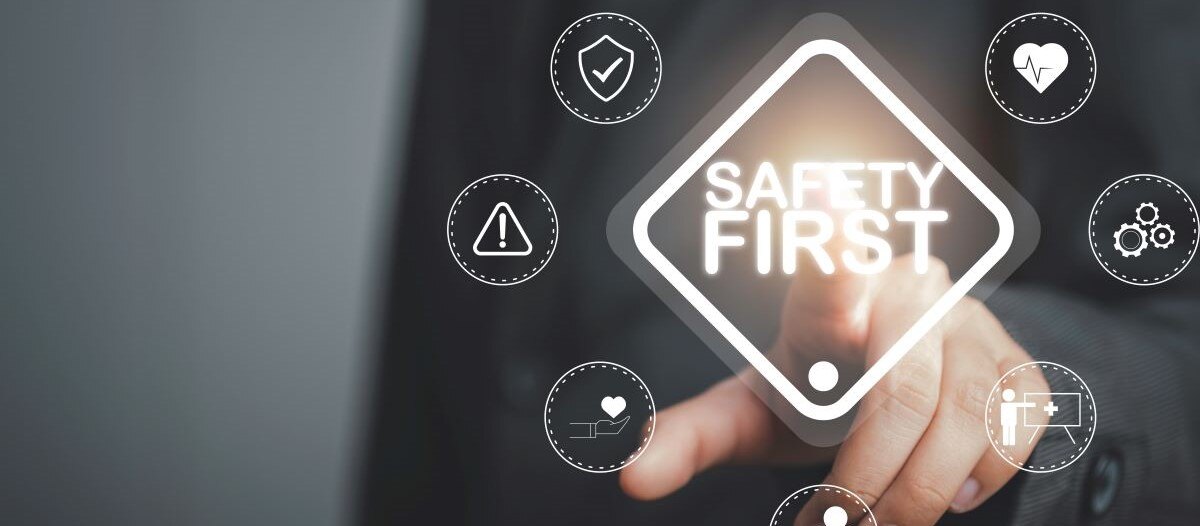An Ounce of Prevention
Reducing the threat of workplace violence

Most hospitals have developed robust response plans for incidents. However, there is a growing need for even more preventive measures and action. In response, accrediting organizations such as The Centers for Medicare & Medicaid Services (CMS) and OSHA have intensified their focus on the safety and security of health care facilities, streamlining standards to ensure that proactive measures are in place.
With the addition of the new workplace violence standard EC.02.01.01 EP17 by The Joint Commission, another leading regulatory body, health care providers are required to proactively assess their current workplace safety measures and identify opportunities for further improvement to minimize risks. At this point, hospitals and health care facilities should be adequately prepared to demonstrate their actions to address workplace violence to avoid potential infractions.
An ounce of prevention
The Joint Commission regularly evaluates and updates its accreditation standards. However, with numerous modifications, deletions and additions over the years, hospitals and health care facilities often need help to keep pace. To encourage greater levels of compliance, The Joint Commission modernized its core standards and introduced new ones to provide greater clarity. The workplace violence prevention standards apply to all Joint Commission-accredited hospitals. The new standards emphasize proactive measures in addition to previous protocols, such as controlling access to and egress from security-sensitive areas.
Specifically, the newest safety standard requires the hospital to conduct a proactive risk assessment or annual worksite analysis. The guidelines are extensive, including analyzing the worksite, the hospital’s workplace violence incidents, and how the program’s policies and procedures, training, education and environmental design reflect best practices and conform to applicable laws and regulations. Based on the findings, the hospital must take action to mitigate or resolve workplace violence safety and security risks.
Facility managers will be crucial in addressing this new regulation, working closely with the compliance department and colleagues across the organization. They will be expected to regularly conduct worksite analyses to ensure that policies and procedures follow the updated standards. Hospitals must now be prepared to demonstrate they have completed a worksite risk assessment as The Joint Commission expects they have had adequate time to respond to the new standards. However, many hospitals face challenges in conducting comprehensive analyses to evaluate policy effectiveness and ensure compliance. This is often attributed to budgetary and staffing constraints. Failing to comply not only heightens the likelihood of safety and security incidents but could also put hospitals at risk of reputational harm, potential loss of accreditation, a decrease in patient volume and revenue loss.
Best practices for a preventive approach<
 The Joint Commission has identified key focus areas for mitigating incidents of workplace violence:
The Joint Commission has identified key focus areas for mitigating incidents of workplace violence:
- Access
- IDing anyone entering a facility
- Annual worksite analysis
As standards and regulations surrounding workplace safety continue to evolve, organizations can stay prepared by following best practices:
-
Make it public. Increasingly, health care organizations are including workplace violence prevention programs in their code of conduct, establishing specific guidelines for badging, identification, designated points of ingress/egress and reporting incidents. By making these programs publicly available, organizations can demonstrate their commitment to creating a safe and supportive work environment for their employees, patients and visitors.
-
Build an interdisciplinary team. FMs should be part of an interdisciplinary team responsible for creating a security masterplan that defines the organization’s safety and security policies, practices and assessments, including the annual workplace assessment. The organization’s security leader may lead this team with input from different departments and stakeholders, including clinical, admittance, IT and patient safety.
There are three categories of security risk assessments:
-
-
General Facility Risk Assessments: Evaluate the general vulnerabilities of a facility, including the local area, building perimeter, access to a facility and accessible areas inside a facility.
-
High-risk Department Risk Assessments: Health care facilities should assess their high-risk or security-sensitive departments, as identified by the The International Association for Healthcare Security and Safety and Joint Commission.
-
Situational or Incident-based Risk Assessments: After a serious incident or near miss, it is prudent to gauge contributing vulnerabilities and provide recommendations to mitigate the likelihood of a recurrence.
-
-
Understand the roles. Most FMs will oversee the annual workplace assessment or have input into it. They need to fully understand their role and responsibilities relative to other members of the interdisciplinary committee in conducting evaluations, as well as creating and testing protocols to satisfy the new workplace assessment requirement.
Getting started
Facility managers should first audit their practices and supplement the audit with industry data to identify potential gaps in compliance with these new standards. For example, the absence of proper ID badge controls may lead to the issuance of badges to unregistered, non-compliant or unqualified vendor representatives. FMs should then regularly assess whether their safety and security protocols and processes are followed and proactively address any issues or gaps.
To avoid the negative consequences of noncompliance, FMs must prioritize conducting a thorough worksite analysis and documenting all actions taken as a result. If possible, partner with a trusted third-party organization or invest in technology that can help monitor and measure activities and progress in alignment with organizational goals.
Fortunately, more modern vendor management solutions are available to help short-handed facility managers automate vendor access. By limiting the paperwork and manual effort needed to manage vendor credentialing and badging compliance, health systems can better address the constantly shifting compliance landscape and help create a safer environment.
Preventive approaches done right
When hospitals experience a steady increase in admissions and procedures, they tend to bring in more staff, patients, vendors and other individuals. Organizations should take a proactive approach to access control and security, beginning with clearly defining badging requirements through training staff. As a result, all staff are empowered to follow through on their training to help ensure ongoing compliance with vendor management and violence prevention policies and procedures.
Hospitals and other health care facilities are places where people seek help and comfort – reflecting the Hippocratic oath of “first, do no harm.” These organizations must prioritize the safety and security of patients, staff and visitors. To comply with the new Joint Commission regulations, health care organizations must establish and enforce policies and procedures that will help protect everyone in their facilities. By fostering a culture of safety, providing comprehensive training, conducting risk assessments and implementing effective security measures, hospitals and health systems can work toward minimizing violence in health care and safeguarding the well-being of both hospital workers and patients.

Kim Fox is a senior compliance solutions specialist for GHX Vendormate. In this role, Fox works directly with hospitals and other health care providers to evolve and modernize their credentialing and compliance programs.
Read more on Occupancy & Human Factors , Risk Management and Workplace
Explore All FMJ Topics









